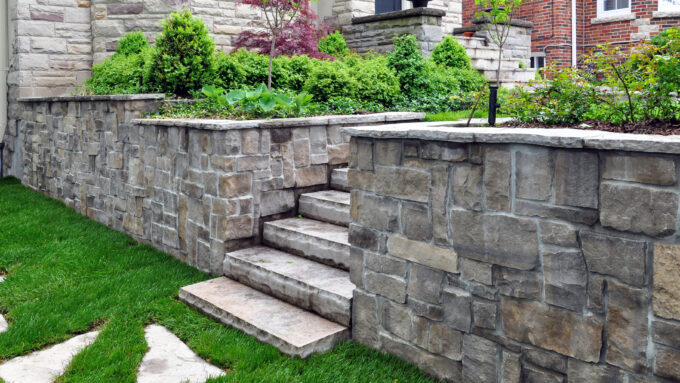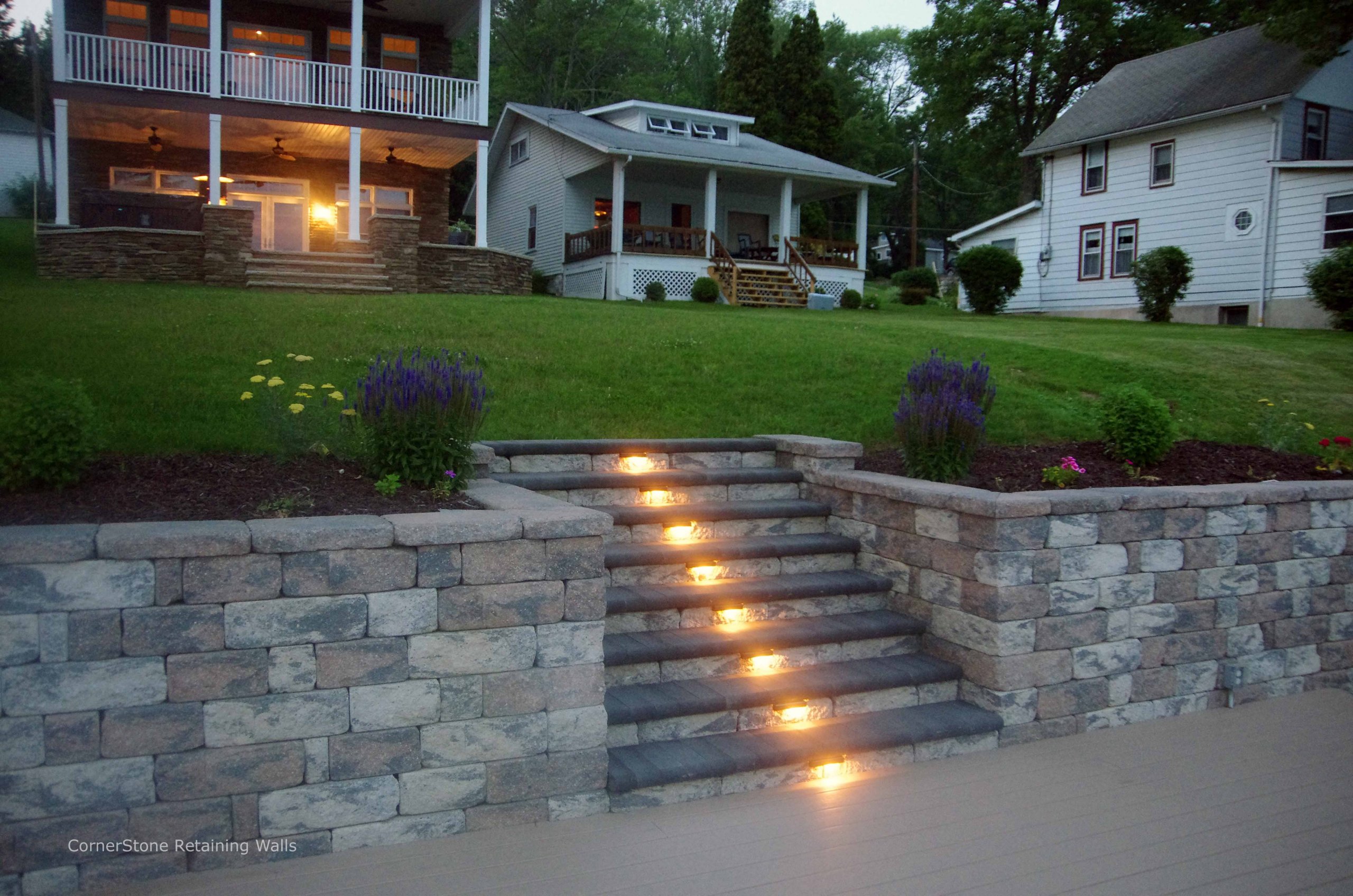Professional Tips for Setting Up Retaining Walls Sunshine Coast Efficiently
Enhancing Property Stability: The Duty of Retaining Walls in Soil Retention and Disintegration Control
Retaining wall surfaces stand as quiet guardians, playing a vital role in soil retention and disintegration control. By checking out the nuances of various kinds, layout factors to consider, building strategies, and maintenance pointers associated with preserving wall surfaces, a deeper understanding of their essential function in enhancing residential property stability arises.
Significance of Retaining Walls in Stability
Maintaining wall surfaces play a crucial function in holding back dirt, avoiding disintegration, and producing level surfaces in sloped locations. By offering architectural assistance, keeping walls assist to rearrange lateral pressure triggered by soil, avoiding landslides and slippage.
Maintaining wall surfaces are specifically important in sloping or irregular surfaces where soil erosion is a typical event. Without adequate support, soil erosion can bring about the degradation of landscapes, endangering the integrity of frameworks and posturing risks to inhabitants. Preserving walls work as barriers, maintaining the dirt and preventing it from moving downhill throughout hefty rains or various other environmental stress factors.
Additionally, preserving walls offer lasting advantages by minimizing maintenance costs related to dirt disintegration and land instability. By investing in properly designed retaining wall surfaces, homeowner can ensure the long life and sustainability of their landscapes while advertising a safe and visually appealing environment.

Kinds of Retaining Walls for Erosion Control
Gravity retaining wall surfaces are tough structures that depend on their weight to withstand the stress of the soil behind them. Cantilever retaining wall surfaces, on the other hand, are designed with a thicker base and make use of a lever arm to stand up to the dirt stress.
For taller walls or where space is a restraint, secured preserving walls are commonly utilized. When selecting the ideal kind of maintaining wall for disintegration control, variables such as soil composition, wall elevation, and site conditions need to be very carefully considered to guarantee long-lasting stability and effectiveness.
Design Considerations for Soil Retention
When thinking about design facets for efficient dirt retention remedies,Integrating the principles of structural design and environmental sustainability is important. When making for soil retention, it is essential to analyze the specific requirements of the website, including dirt composition, water drainage patterns, and slope security. The height and place of the keeping wall are important factors that affect the general style. Engineers should additionally consider the stress applied by the maintained dirt and potential side tons to make sure the structure's stability with time.
Moreover, the product option for the keeping wall is crucial in boosting durability and capability. Concrete, wood, gabion baskets, and natural stone are usual materials made use of in retaining wall surface construction, each with its special advantages and factors to consider. Correct water drainage mechanisms, such as weep openings and French drains, ought to be integrated right into the layout to avoid water build-up behind the wall surface, which can bring about architectural failing and disintegration.
Building Techniques for Preserving Wall Surfaces
When executing design factors to consider for efficient soil retention, the building techniques for preserving wall surfaces play an essential duty in ensuring architectural honesty and lasting security. One typical method is the gravity wall, which depends on the weight and mass of the wall itself to stand up to the pressure of the preserved dirt.
One more extensively utilized construction method is the cantilevered wall, which utilizes a concrete slab structure that expands in reverse right into the kept soil. This read the article layout supplies additional security and appropriates for tool to high retaining walls. For taller frameworks, strengthened soil techniques such as the use of geogrids or soil nails can be used to boost the wall why not look here surface's toughness and stability.

Maintenance Tips for Building Stability
To make certain long-lasting home security, regular maintenance methods are essential for protecting the stability of preventing and preserving walls disintegration issues. Cleaning the surface of the maintaining walls can additionally aid keep their architectural integrity by getting rid of dust, particles, and vegetation that could damage the wall over time.
Along with aesthetic examinations and cleansing, it is vital to sites check the drainage systems connected with the preserving wall surfaces. Making sure that drains pipes are clear of blockages and working correctly can prevent water buildup behind the walls, which can bring about stress and possible failure. Properly functioning drain systems are important for taking care of water flow and decreasing the threat of erosion.
Frequently keeping track of and preserving retaining wall surfaces according to these tips can prolong their lifespan and contribute to the overall stability of the building.
Verdict
To conclude, preserving walls play an essential duty in boosting home security by stopping soil erosion and keeping dirt in position. By making use of different types of taking into consideration and preserving wall surfaces layout and building and construction strategies, residential property proprietors can effectively manage erosion and preserve the integrity of their land. Routine maintenance of preserving walls is important to ensure long-term stability and security versus disintegration. Effectively constructed and kept retaining walls are essential elements in protecting building security.
For taller walls or where space is a restraint, secured retaining walls are frequently used. These wall surfaces use wires or strips that are anchored right into the dirt or rock behind the wall to supply additional assistance. When selecting the appropriate type of preserving wall surface for erosion control, factors such as soil make-up, wall elevation, and site conditions should be very carefully considered to make sure lasting security and efficiency.
One usual strategy is the gravity wall surface, which depends on the weight and mass of the wall itself to stand up to the pressure of the kept dirt. Cleaning the surface area of the keeping wall surfaces can additionally assist preserve their structural honesty by removing dust, particles, and plants that could weaken the wall surface over time.